Irish Myths and Legends: Guide to Irish Culture
Welcome to my article on Irish Myths and legends. Over the years I have gained a passion for passing on information about our Irish heritage to ensure our stories are kept alive. In this article, you will find a list of information that will give you a glimpse at our ancient heritage and I hope you will enjoy it as much as I do.
Irish Myths and Legends have captivated people’s attention for generations. Our country, Ireland, is a land steeped in mystery, where the ancient past lingers in every rolling hill and mist-covered glen. Its Irish myths and legends are as vibrant as the landscape itself, woven into the very fabric of the country’s identity.
From the fierce warriors of the Fenian Cycle to the enchanting creatures that dwell in the Otherworld, Irish mythology is a treasure trove of stories that have captivated imaginations for centuries.
These Irish Myths and Legends, passed down through generations, offer more than just entertainment—they are a window into Ireland’s soul, reflecting its values, fears, and hopes.
In this article, we will journey into the heart of Irish myths and Legends, exploring the heroes, gods, and mystical beings that not only continue to shape but are deeply ingrained in Ireland’s cultural heritage.
Whether you’re a seasoned enthusiast or new to these ancient tales, prepare to be enchanted by the rich and haunting world of Irish myths and legends.
Table of Contents
The Mythical Origins of Ireland
As told through ancient Irish myths and legends, Ireland’s origins are a complex mix of battles, divine interventions, and migrations that shaped the island’s earliest days.
These Irish myths and legends, passed down through oral tradition and later recorded by medieval scribes, offer a glimpse into a world where gods and mortals coexisted, and the land was a stage for epic battles.
The Tuatha Dé Danann: The Gods of Ireland
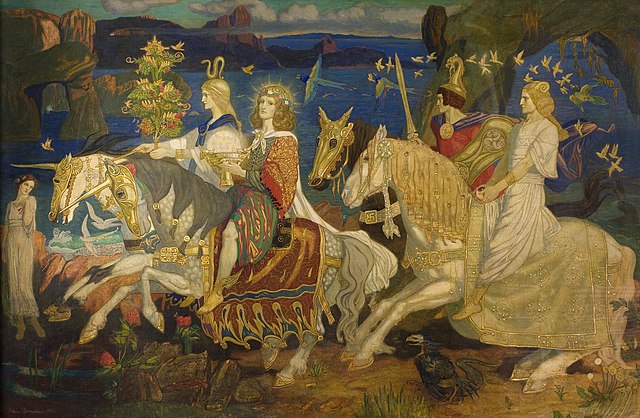
The Tuatha Dé Danann (tu atha dey da nann), often called the People of the Goddess Danu, are central to Ireland’s mythological origins. According to legend, this powerful race of gods and goddesses descended from the heavens in a cloud of mist, bringing advanced knowledge of magic, arts, and warfare.
Once they arrived in Ireland, the Tuatha Dé Danann established themselves as the new rulers by beating the Fir Bolg in the First Battle of Mag Tuired, transforming Ireland into a land of wonders under their reign.
Among their greatest battles was the conflict with the Fomorians, a race of chaotic and monstrous beings who represented the forces of darkness and destruction.
The Tuatha Dé Danann, led by their chief god, the Dagda, and the warrior Lugh, ultimately triumphed over the Fomorians in the Second Battle of Mag Tuired, securing their dominance over Ireland.
Please read my article on the Tuatha Dé Dananan in Ireland for more information.
The Fir Bolg: The Earthy Inhabitants
Before the arrival of the Tuatha Dé Danann, the Fir Bolg were the rulers of Ireland. They are often portrayed as hardy and resilient people related to the Tuatha Dé Danann.
According to legend, the Fir Bolg left the Island of Ireland and became enslaved people in Greece. They eventually escaped and returned to Ireland, establishing their own kingdom.
Some stories claim the Fir Bolg’s rule was marked by relative peace until the arrival of the Tuatha Dé Danann. The two races clashed in the First Battle of Mag Tuired, where the Fir Bolg were ultimately defeated.
Despite their loss, the Tuatha Dé Danann respected the Fir Bolg for their bravery and granted them a portion of the land to inhabit, ensuring their legacy would continue in Irish myth.
Please read my article on the Story of the Fir Bolg for more information.
The Fomorians: The Forces of Chaos
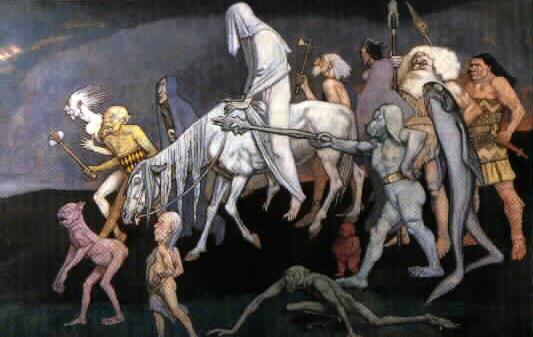
The Fomorians are one of Irish mythology’s most mysterious and terrifying races. Often depicted as monstrous and evil beings, they were associated with the destructive forces of nature, such as storms and winter.
The Fomorians were believed to inhabit the sea and the harsh, wild regions of Ireland, from where they would launch raids on the more civilised inhabitants of the island.
Their most infamous leader was Balor of the Evil Eye, a giant with a single, deadly eye that could kill anyone upon whom it gazed. The Fomorians represented a constant threat to the prosperity and order established by the Tuatha Dé Danann.
The epic battle between the Tuatha Dé Danann and the Fomorians at Mag Tuired symbolised the struggle between order and chaos, light and darkness.
Although the Fomorians were defeated, their legacy continued in Irish myth as symbols of nature’s uncontrollable and often destructive power.
Their presence in Ireland’s mythological history underscores the island’s enduring connection to the natural world’s awe-inspiring beauty and formidable dangers.
If you want to learn more, please read my article on the Legend of the Fomorians in Ireland.
The Milesians: The Ancestors of the Irish
According to Irish mythology, the Milesians were a people of mortal descent who hailed from the Iberian Peninsula. Their leader, Míl Espáine, and his followers were drawn to Ireland by a prophecy and tales of the island’s beauty.
The Milesians are credited with being the final invaders of Ireland, and their arrival marked the end of the Tuatha Dé Danann’s rule.
The story of the Milesians is one of both conquest and reconciliation. After several encounters and negotiations with the Tuatha Dé Danann, it was agreed that Ireland would be divided between the two peoples.
The Milesians took control of the surface world. At the same time, the Tuatha Dé Danann retreated into the underground, becoming the Sidhe (shee), or fairy folk, who continued to influence the land from their hidden realms.
This mythological division laid the foundation for the Irish belief in the Otherworld and the enduring presence of supernatural beings in the landscape.
Heroes of Irish Mythology
Irish mythology is filled with larger-than-life heroes whose tales of bravery, strength, and tragedy have resonated through the ages. These legendary figures embody the ideals and struggles of their time, reflecting the values and challenges of ancient Ireland.
Among the most celebrated heroes are Cú Chulainn, Fionn mac Cumhaill, and Deirdre of the Sorrows—each representing different aspects of heroism and tragedy in the rich tapestry of Irish folklore.
Cú Chulainn: The Hound of Ulster

Cú Chulainn is perhaps the most famous hero of Irish mythology. He is known for his extraordinary strength, martial prowess, and tragic destiny. He is the central figure in the Ulster Cycle, a collection of tales recounting the epic struggles of the kingdom of Ulster against its rivals.
Born as Sétanta, he earned the name Cú Chulainn, meaning “Hound of Culann,” after a fateful encounter where he killed a fierce guard dog in self-defence and offered to take its place until a replacement could be found. This act of honour and bravery foreshadowed his future as a formidable warrior.
Cú Chulainn’s most famous feat is his defence of Ulster in the epic tale “The Cattle Raid of Cooley” (Táin Bó Cúailnge). In this saga, Cú Chulainn single-handedly holds off the armies of Queen Medb of Connacht, who seeks to steal the prized brown bull of Cooley.
Armed with his indomitable spear, the Gáe Bolga, and driven by a berserker rage known as the “warp-spasm,” Cú Chulainn defeats countless foes in battle.
However, his life is marked by tragedy—prophecies foretell his early death, and he ultimately meets his end while still in his youth, standing defiantly against overwhelming odds.
For more information please read my article on the Birth of Cú Chulainn, how Cú Chulainn was Knighted, and the naming of Cú Chulainn.
Fionn mac Cumhaill: Leader of the Fianna
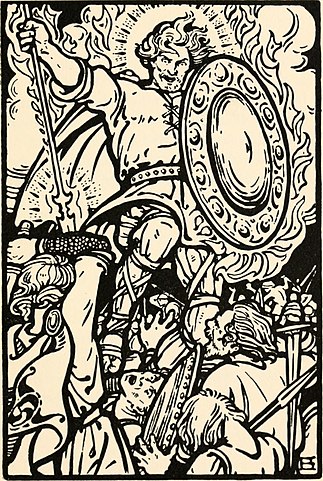
Fionn mac Cumhaill, or Finn McCool, is another iconic hero of Irish mythology. He is renowned for his wisdom, leadership, and connection to the natural world.
Fionn is the central figure of the Fenian Cycle, a series of tales chronicling the adventures of the Fianna, a band of elite warriors who served as protectors of Ireland.
As a young man, Fionn gained the wisdom of the ages by accidentally burning his thumb while cooking the Salmon of Knowledge. This magical fish bestowed all the world’s knowledge upon whoever ate it.
By sucking his thumb, Fionn could access this wisdom whenever needed, making him both a wise leader and a cunning warrior.
Numerous adventures and heroic deeds mark Fionn’s leadership of the Fianna. One of the most famous legends is that of the Giant’s Causeway, a natural wonder in Northern Ireland.
According to myth, Fionn created the causeway to cross the sea and confront a Scottish giant. Another well-known story involves Fionn and the legendary Diarmuid and Gráinne, a tragic tale of love and betrayal that highlights the complexities of honour and loyalty in Irish mythology.
Fionn mac Cumhaill is a warrior and a symbol of the connection between humanity and nature, embodying the qualities of wisdom, strength, and a deep respect for the natural world.
For more information, please read my article on the Stories of young Fionn mac Cumhaill.
Deirdre of the Sorrows: A Tragic Heroine
While many of Ireland’s heroes are celebrated for their feats in battle, Deirdre of the Sorrows is remembered for her beauty, tragic love story, and role in one of the most poignant tales in Irish mythology. Deirdre’s story is part of the Ulster Cycle and is a tale of love, jealousy, and inevitable tragedy.
Deirdre was born under a prophecy that foretold great sorrow and destruction because of her beauty. Despite this, she grew up as the most beautiful woman in Ireland, and King Conchobar of Ulster intended to marry her.
However, Deirdre fell in love with Naoise, a young warrior of the Red Branch Knights. Together with Naoise and his brothers, Deirdre fled to Scotland to escape Conchobar’s wrath.
The lovers’ happiness was short-lived, as Conchobar’s men eventually tracked them down and, through treachery, lured them back to Ireland. Upon their return, Naoise and his brothers were killed, and Deirdre was forced to become Conchobar’s queen. Heartbroken and unable to bear the loss of her true love, Deirdre eventually took her own life.
Her story is a powerful testament to the themes of love, loss, and the tragic consequences of fate.
For more information, please read the story of Deirdre of the Sorrows.
Enchanting Creatures and Spirits
Irish mythology is populated with enchanting creatures and spirits, each with unique qualities, mysteries, and influence over the mortal world.
These beings, often straddling the line between the natural and the supernatural, are integral to Ireland’s rich folklore, embodying the fears, hopes, and imaginations of those who told their stories.
From the mournful wails of the Banshee to the mischievous tricks of Leprechauns, these creatures continue to captivate the imagination and inspire tales of wonder and caution.
The Banshee (Bean Sidhe): The Wailing Spirit of Death
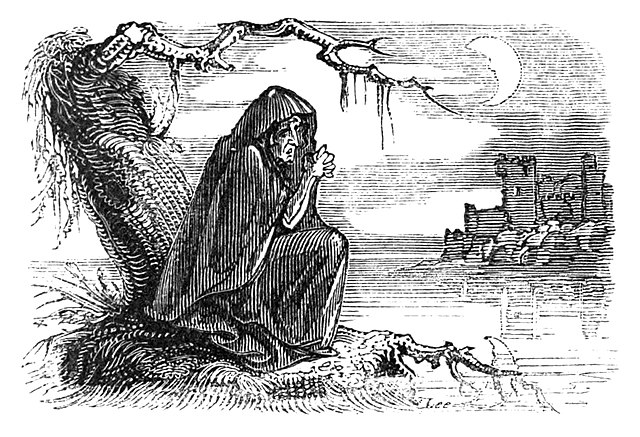
The Banshee, or “Bean Sidhe” in Irish, is among the most well-known spirits in Irish folklore. She is a harbinger of death, often appearing as a ghostly woman whose mournful wails foretell the impending demise of an Irish family member.
The Banshee’s appearance varies in different accounts—sometimes she is seen as a beautiful young woman with long flowing hair, other times as an aged crone with a wrinkled face and sunken eyes.
Regardless of her form, the Banshee’s cry is unmistakable, an eerie keening that chills the soul and heralds tragedy.
According to legend, the Banshee is connected to the ancient noble families of Ireland, particularly those with surnames beginning with “O'” or “Mac”.
When death is near, she is said to appear near the family’s home, often combing her hair as she wails in sorrow. In some tales, the Banshee does not appear but is heard weeping in the distance, her cries echoing through the night.
Though feared, the Banshee is not malevolent; instead, she is seen as a spirit mourning the loss of life, reflecting the deep connection between the living and the dead in Irish culture.
For more detailed information, read my article on the tale of Ireland’s Banshee.
Leprechauns: The Mischievous Fairy Shoemakers
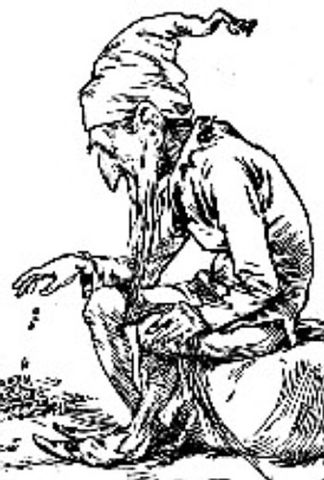
Leprechauns are the most iconic creatures of Irish mythology, widely recognised for their association with luck and treasure. These small, bearded men, often dressed in green coats and buckled shoes, are skilled shoemakers known for their cunning and trickery.
They are also famously elusive, able to disappear at will and avoid capture by humans.
The legend of the Leprechaun is rich with tales of mischief and hidden gold. If a person captures a Leprechaun, the creature will grant three wishes in exchange for his release.
However, the Leprechaun is a master of deception and often tricks his captor into making foolish or unintended wishes. One of the most enduring symbols associated with Leprechauns is the pot of gold hidden at the end of the rainbow. This treasure is always out of reach.
Leprechauns are often seen as symbols of Ireland’s enduring spirit, representing the charm and the sly wit characteristic of Irish culture. Over time, they have become cultural icons, especially during St. Patrick’s Day celebrations, where they are celebrated as symbols of luck and Irish heritage.
Please read my article on the Legend of the Leprechaun in Ireland for further information.
Selkies: The Shape-Shifting Seal People
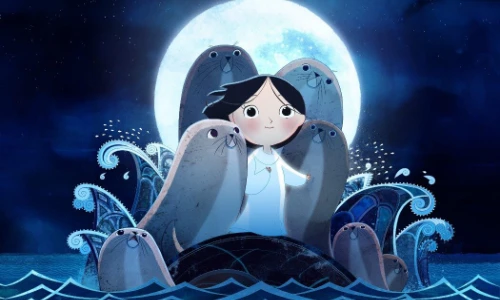
Selkies are enchanting creatures from the folklore of the coastal regions of Ireland and Scotland. These mythical beings can transform from seals into humans by shedding their seal skins.
Selkies are said to be incredibly beautiful in their human form, with a mysterious and otherworldly aura.
The most famous tales of Selkies involve their interactions with humans, often in the form of romantic or tragic love stories. One common legend tells of a fisherman who finds a Selkie’s discarded seal skin and hides it, thereby preventing the Selkie from returning to the sea.
Now trapped in human form, Selkie marries the fisherman and bears his children. However, the story usually ends in sorrow, as Selkie eventually finds her hidden skin and returns to the ocean, leaving her human family behind. These tales highlight longing, loss, and the tension between the earthly and the ethereal.
Selkies embody the connection between the natural world and the supernatural, representing the mysteries of the sea and the often bittersweet relationships between humans and the magical beings that inhabit the world of Irish folklore.
The Púca: The Shape-Shifting Trickster
The Púca is a mischievous and sometimes evil creature known for its shape-shifting abilities. Púcas can take on various forms, such as a horse, a goat, or even a human, often with unusual or frightening features like glowing eyes or jet-black fur.
They are notorious for playing tricks on humans, such as leading travellers astray or offering wild rides through the countryside that end in terrifying experiences.
While the Púca can be playful, it is also a creature to be respected and feared. In some tales, the Púca brings good fortune to those who treat it with respect.
In contrast, in others, it wreaks havoc on crops and livestock or frightens people with its eerie appearance. The Púca embodies nature’s unpredictable and untamed aspects, serving as a reminder of the wild forces that exist beyond human control.
Sacred Sites and Legendary Locations
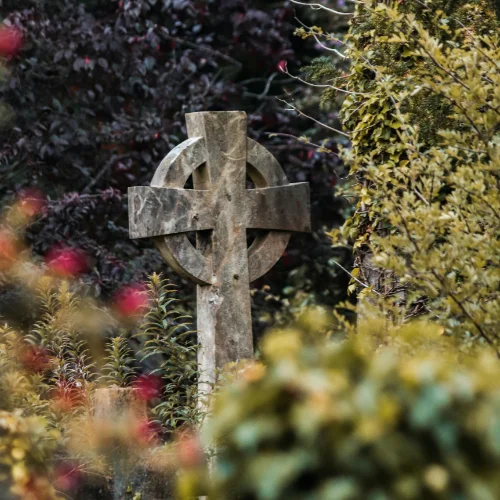
Ireland’s landscape is dotted with ancient sites steeped in myth and legend, where history and mythology intertwine to create a rich tapestry of cultural heritage.
These sacred sites and legendary locations serve as physical and spiritual landmarks, offering insight into the beliefs and stories that have shaped Ireland over millennia.
From the Hill of Tara, where kings once ruled, to the enigmatic Newgrange, these places continue to captivate the imagination and draw visitors worldwide.
The Hill of Tara: The Seat of Kings
The Hill of Tara in County Meath is one of Irish mythology’s most essential and revered sites. Often referred to as ancient Ireland’s spiritual and political heart, Tara was the seat of the High Kings of Ireland. In this place, chieftains would gather to make crucial decisions and celebrate rituals.
Mythologically, Tara is associated with the Tuatha Dé Danann. This divine race once ruled Ireland before the arrival of the Milesians. It is said that the Tuatha Dé Danann left behind many of their sacred artefacts at Tara, including the Lia Fáil, or Stone of Destiny, which was believed to roar when touched by the rightful king of Ireland.
Tara is also connected to the goddess Ériu, after whom Ireland (Éire) is named. The site was seen as a gateway between the mortal world and the Otherworld, where the veil between the two realms was thin.
Today, the Hill of Tara symbolises Irish identity and heritage, attracting those interested in its history, archaeology, and spiritual significance. Walking its ancient grounds, visitors can feel the echoes of the past and the enduring power of this legendary site.
Newgrange: The Ancient Passage Tomb
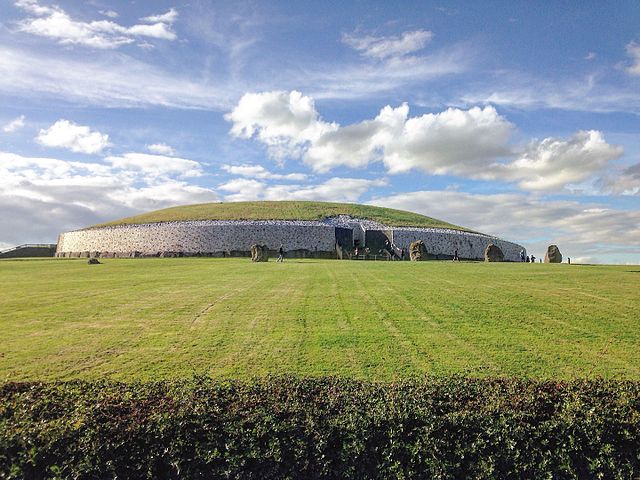
Newgrange, located in County Meath, is one of Ireland’s most iconic and mysterious ancient monuments. This prehistoric passage tomb, built around 3,200 BC, predates Stonehenge and the Great Pyramids of Giza, making it older than many of the world’s most famous archaeological sites.
Newgrange is part of the Brú na Bóinne complex, a UNESCO World Heritage site with significant structures like Knowth and Dowth.
In Irish mythology, Newgrange is often associated with the Dagda, the father god of the Tuatha Dé Danann, and his son, Aengus, the god of love. According to legend, Aengus tricked the Dagda into giving him possession of Newgrange for eternity.
The site is also linked to the goddess Boann, the river goddess named after the River Boyne. The stories surrounding Newgrange emphasise its importance as a place of power and otherworldly connection.
One of Newgrange’s most remarkable features is its alignment with the winter solstice. Every year, light enters the passage at sunrise on the shortest day, illuminates the inner chamber, and has fascinated people for thousands of years.
This alignment suggests that Newgrange was a burial site and a place of profound spiritual and astronomical significance.
The Hill of Uisneach: The Mythological Center of Ireland
The Hill of Uisneach, located in County Westmeath, is often called the mythological centre of Ireland, both geographically and spiritually. Uisneach is believed to be the meeting point of the five provinces of ancient Ireland: Ulster, Munster, Leinster, Connacht, and Meath. As such, it was seen as the navel of Ireland, the place where the land’s energies converged.
In mythology, Uisneach is closely associated with the goddess Ériu, the matron goddess of Ireland. Legend has it that Ériu is buried on the hill, and a stone known as the “Catstone” marks where she lies.
Uisneach was also a significant site for the druids. It was the location of the ancient Bealtaine festival, a fire festival marking the beginning of summer. Huge bonfires were lit on the hill to honour the sun and to ensure a bountiful harvest.
Today, the Hill of Uisneach is recognised as a site of immense historical and cultural importance. It continues to be a place of pilgrimage and celebration, with modern festivals and events honouring its ancient traditions and significance.
The Giant’s Causeway: A Natural Wonder with a Legendary Origin
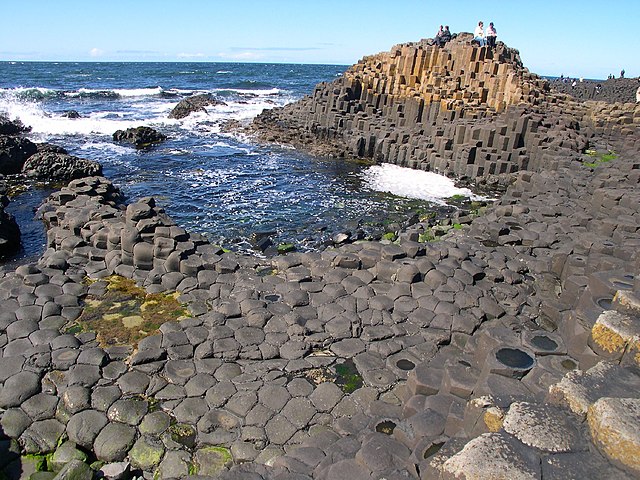
The Giant’s Causeway, located on the northeast coast of Northern Ireland in County Antrim, is a natural wonder that has captured visitors’ imaginations for centuries.
This stunning landscape, comprised of around 40,000 interlocking basalt columns, was formed millions of years ago by volcanic activity. However, the Giant’s Causeway has a much more magical origin in Irish mythology.
According to legend, the causeway was built by the giant Fionn mac Cumhaill (Finn McCool) as a bridge to Scotland, where he intended to challenge a rival giant, Benandonner. In one story version, Fionn’s wife, Oonagh, tricks Benandonner by disguising Fionn as a baby.
When Benandonner sees the size of the “baby,” he flees back to Scotland in terror, destroying the causeway behind him to prevent Fionn from following.
The Giant’s Causeway is a powerful symbol of the connection between the natural and supernatural worlds, where the landscape becomes a character in Ireland’s mythic stories.
Today, it is a UNESCO World Heritage site and one of Ireland’s most popular tourist destinations, drawing visitors eager to experience the beauty and mystery of this legendary location.
The Otherworld and the Afterlife
In Irish mythology, the concept of the Otherworld is central to understanding ancient Ireland’s spiritual beliefs and cultural narratives. The Otherworld, often depicted as a parallel realm of beauty, eternal youth, and abundance, exists beyond the mortal plane. It is a place where gods, spirits, and the souls of the dead reside, and it plays a significant role in the mythological landscape, offering a glimpse into the Irish understanding of life, death, and the afterlife.
The Otherworld: A Land of Eternal Youth and Joy
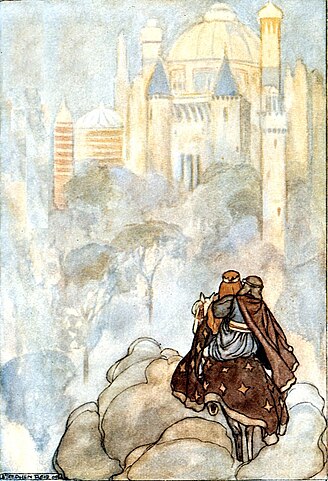
The Otherworld, known by many names such as Tír na nÓg (the Land of Youth), Mag Mell (the Plain of Joy), and Tír na mBan (the Land of Women), is often described as a paradise where time stands still, and the concerns of the mortal world no longer apply.
It is a place of perpetual beauty, where the land is ever-fertile, and the inhabitants live in harmony, free from disease, ageing, and death. The Otherworld is also a realm of enchantment, filled with otherworldly beings such as the Tuatha Dé Danann, who became the Aos Sí (fairy folk) after retreating from the mortal world.
Access to the Otherworld could be gained through various means: magical portals, burial mounds known as Sidhe, misty shores, or even through the intervention of a supernatural being. Many Irish myths involve heroes or mortals being lured or invited to the Otherworld by its inhabitants, often in the form of beautiful women or mysterious guides.
These journeys often involve tests of character and courage. While the Otherworld offers great delights, it also poses dangers, such as the risk of never returning to the mortal realm.
One of the most famous tales of the Otherworld is the story of Oisín, a warrior of the Fianna, who falls in love with Niamh, a princess of Tír na nÓg. Oisín travels with Niamh to her homeland, where he lives in bliss for what seems like a few years.
However, when he returns to Ireland, he discovers that centuries have passed, and he rapidly ages upon touching the mortal ground, a tragic reminder of the Otherworld’s allure and the passage of time.
The Afterlife: A Journey Beyond Death
In Irish mythology, the afterlife is intricately connected to the concept of the Otherworld. Upon death, the souls of the departed were believed to journey to this parallel realm, where they would continue their existence in peace and contentment.
The afterlife was not seen as a final destination but as a continuation of life in a different form, where the soul could enjoy the pleasures of the Otherworld and remain connected to the natural and spiritual worlds.
The journey to the afterlife was often depicted as a crossing over water, such as a river or sea, symbolising the transition from the mortal world to the Otherworld.
This journey was sometimes guided by a supernatural being, such as Manannán mac Lir, the god of the sea, who guarded the Otherworld and the souls of the dead.
Irish burial practices, such as constructing passage tombs like Newgrange, reflect the belief in an afterlife and the importance of ensuring the deceased’s safe passage to the Otherworld.
These tombs were aligned with astronomical events, such as the winter solstice, further emphasising the connection between life, death, and the cycles of nature.
In Irish mythology, the Otherworld and the afterlife are not places of judgment or punishment but realms where the soul can find rest, renewal, and perhaps even rebirth.
The cyclical nature of life and death mirrored in the changing seasons and the natural world, is a central theme in Irish spiritual beliefs, with the Otherworld serving as both a destination and a source of continued existence.
The Thin Veil: The Connection Between Worlds
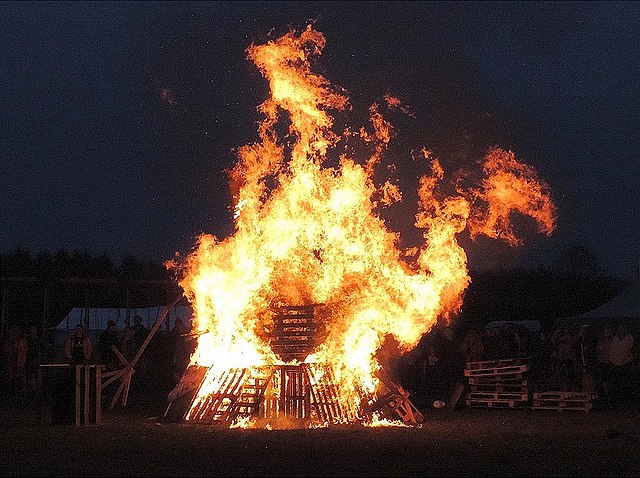
The boundary between the mortal world and the Otherworld is often depicted as thin or transparnt, especially at certain times of the year or in specific locations.
Samhain, the festival marking the end of the harvest and the beginning of winter, is one such time when the veil between the worlds is believed to be at its thinnest, allowing spirits and otherworldly beings to cross into the human realm.
This belief originates from many customs and traditions associated with Halloween, a time when the living and the dead are considered closest.
Sacred sites like the Sidhe mounds are considered gateways to the Otherworld.
Many legends speak of mortals who accidentally or intentionally enter these realms, often returning with tales of wonders and dangers. These sites serve as reminders of the constant presence of the Otherworld in the landscape and the enduring connection between the physical and spiritual dimensions of life.
Please read my article on the History of Samhain in Ireland for more information.
The Influence of Irish Mythology on Modern Culture
Irish mythology has impacted modern culture with its rich history of heroes, gods, and legendary creatures. The stories passed down through generations have shaped Ireland’s cultural identity, influencing worldwide literature, art, film, and popular culture. This legacy continues to inspire creators and captivate audiences, keeping the spirit of Irish mythology alive in modern society.
Literature and Storytelling
One of the most significant ways Irish mythology has influenced modern culture is through literature. Irish and international writers have drawn heavily on the myths and legends of Ireland to craft stories that resonate with universal themes of heroism, love, tragedy, and the supernatural.
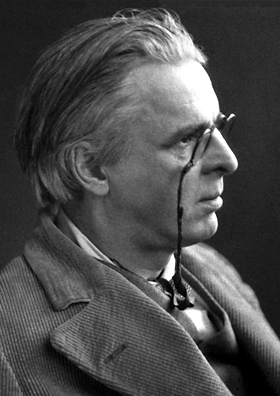
For example, W.B. Yeats, one of Ireland’s most celebrated poets, was deeply inspired by Irish mythology and folklore. His works often evoke the mysticism of the Irish landscape and its legendary past. In his poems like “The Stolen Child” and “The Wanderings of Oisin,” Yeats reimagines Irish myths, exploring the tension between the Otherworld and the human experience.
Similarly, in Ulysses, James Joyce draws on the structure and themes of the Homeric epic while infusing the story with references to Irish mythology. This blending of classical and Irish mythological elements creates a rich, text illustrating the beauty of Irish mythological culture.
Beyond Ireland, many fantasy authors have been influenced by Irish mythology. J.R.R. Tolkien, author of The Lord of the Rings, was deeply inspired by Celtic myths, including those of Ireland.
The idea of an ancient, fading world of magic, populated by elves and other supernatural beings, echoes the themes of the Tuatha Dé Danann and the Otherworld in Irish mythology. This influence can be seen in how Tolkien constructs his mythological world, filled with ancient races and the fight between good and evil.
Please read my article on the most influential Poets in Ireland for more information on our exquisite writers.
Film and Television
Irish mythology has also found its way into modern film and television, where its stories and characters continue to capture the imagination of global audiences. Movies such as The Secret of Kells (2009) and Song of the Sea (2014) by Cartoon Saloon have brought Irish folklore to life through stunning animation.
These films, which explore myths like the Book of Kells and the legend of the Selkies, have been praised for their ability to introduce audiences, especially younger ones, to Ireland’s rich mythological heritage.
In addition, the popular television series Outlander features elements of Celtic mythology, including references to the standing stones reminiscent of the ancient sites associated with Irish folklore. The series’ portrayal of time travel through these stones echoes the idea of the Otherworld, where the boundaries between time and space are connected.
Modern adaptations of classic myths have also appeared in various forms of media. For instance, the story of Cú Chulainn, one of Ireland’s greatest heroes, has been reimagined in comic books, novels, and video games, where his legendary battles and tragic fate resonate with new audiences. These adaptations often place the hero in contemporary settings, bridging the gap between ancient myth and modern storytelling.
Music and Art
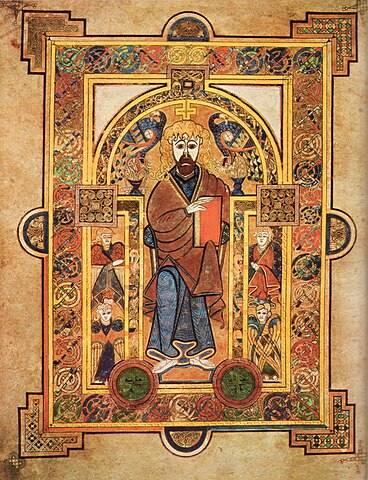
Irish mythology has inspired countless musicians and artists, who have drawn on its themes and imagery to create works that resonate with contemporary audiences. Traditional Irish music, with its ballads and folk songs, often tells stories rooted in mythological themes, such as the sorrowful tale of Deirdre of the Sorrows or the exploits of Fionn mac Cumhaill and the Fianna.
Modern musicians continue to explore these themes, blending traditional elements with contemporary sounds. Bands like Clannad and The Chieftains have incorporated mythological references into their music. At the same time, artists like Enya evoke the mystical landscapes of Irish legend in their ethereal compositions.
In visual art, Irish mythology has been a rich source of inspiration for traditional and modern artists. The Book of Kells, an illuminated manuscript created by Celtic monks, is one of the most famous examples of early Irish art.
It blends Christian iconography with intricate designs that draw on mythological symbols. In modern times, artists like Jim Fitzpatrick have reinterpreted mythological themes through a modern lens, creating iconic images of figures like Cú Chulainn and the Morrígan.
Popular Culture and Beyond
Irish mythology’s influence extends into popular culture, where its themes and characters have become part of the global imagination. Leprechauns, Banshees, and other mythological creatures are now widely recognised symbols, often appearing in films, advertisements, and merchandise worldwide.
While these depictions sometimes reduce the complexity of the original myths, they also demonstrate the enduring appeal of Irish folklore.
St. Patrick’s Day, celebrated worldwide, often features symbols drawn from Irish mythology, such as the shamrock, initially associated with the druidic traditions. This global celebration of Irish culture highlights the widespread influence of Ireland’s mythological heritage.
Moreover, the idea of the Otherworld and Ireland’s mystical landscapes have influenced the portrayal of magical realms in fantasy literature and film, contributing to the genre’s development and popularity.
The portrayal of Ireland as a land of magic and mystery continues to draw tourists eager to explore the real-life settings of the myths they’ve read or seen in popular media.
Irish Myths and Legends, a Summary
The appeal of Irish myths and legends lies in their appeal of adventure, magic, and a longing for a connection to our past. These stories, woven with themes of heroism, love, tragedy, and the supernatural, continue to captivate and inspire people across the globe.
From the epic tales of Cú Chulainn and the tragic romance of Deirdre to the enchanting realms of the Otherworld and the mischief of Leprechauns, Irish mythology offers a window into a world where the boundaries between the mortal and the divine are fluid and where every stone, stream, and hill hide an untold adventure.
Preserving these stories is crucial to honour Ireland’s cultural heritage and maintaining a connection to the values and imaginations of those who came before us. These myths are more than just ancient tales; they are living traditions that continue to shape and enrich Ireland’s cultural identity. By safeguarding and celebrating these narratives, we ensure that future generations can experience the wonder and wisdom embedded in them.
For those eager to delve deeper into Ireland’s mythological past, exploring the island’s sacred sites and legendary locations offers a real connection to these stories. Visiting places like the Hill of Tara, Newgrange, and the Giant’s Causeway provides a physical context for the myths and helps to bring them to life.
Additionally, reading more about these captivating stories—whether through ancient texts or modern retellings can offer new insights and appreciation for the depth and richness of Irish folklore.
As we continue to engage with these myths, let us celebrate our culture and draw inspiration from our Irish heritage. They remind us of the power of storytelling, the magic of our natural world, and of our rich historical past. Whether through personal exploration or community celebrations, embracing the myths and legends of Ireland keeps the magic alive and enriches our cultural heritage.
Recommended Reading List on Irish Mythology
Primary Sources and Classical Texts
- “The Book of Invasions” (Lebor Gabála Érenn)
- Editor/Translator: R.A. Stewart Macalister
- Description: A crucial medieval text that chronicles the mythological history of Ireland from its mythical origins to the arrival of the Celts.
- “The Táin” (Táin Bó Cúailnge)
- Translator: Ciaran Carson
- Description: The epic saga of Cú Chulainn and the Cattle Raid of Cooley is one of the most famous works of Irish mythology. Carson’s translation captures the rhythm and energy of the original.
- “The Mythological Cycle of the Irish”
- Editor/Translator: Thomas Kinsella
- Description: A collection of translations of various mythological texts, including stories from the Ulster Cycle and the Mythological Cycle.
Scholarly Works and Historical Context
- “Celtic Mythology: An Introduction”
- Author: David Rankin
- Description: An accessible introduction to the myths and legends of Celtic peoples, including the Irish, with contextual analysis.
- “Irish Myth: A Concise Guide”
- Author: Edain McCoy
- Description: Provides a clear and concise overview of Irish mythology, focusing on key myths, gods, and legendary figures.
- “The Encyclopedia of Celtic Mythology and Folklore”
- Author: Patricia Monaghan
- Description: A comprehensive reference that covers a wide range of topics related to Celtic mythology, including Irish myths, deities, and folklore.
Modern Interpretations and Retellings
- “Irish Fairy and Folk Tales“
- Editor/Translator: William Butler Yeats
- Description: A collection of traditional Irish fairy tales and folklore, edited by the poet W.B. Yeats. These stories provide insight into the folklore and mythological imagination of Ireland.
- “The Green Book of Fairy Tales”
- Author: Mary G. MacDonald
- Description: This book offers a modern retelling of traditional Irish fairy tales, capturing the essence of folklore in an engaging format.
- “The Last of the High Kings”
- Author: Morgan Llywelyn
- Description: A historical novel set in the time of the mythical kings of Ireland, blending historical facts with mythological elements.
- “The Chronicles of Old Ireland”
- Author: G. W. Russell (A.E.)
- Description: An imaginative retelling of Irish myths and legends that combines historical and mythological narratives.
